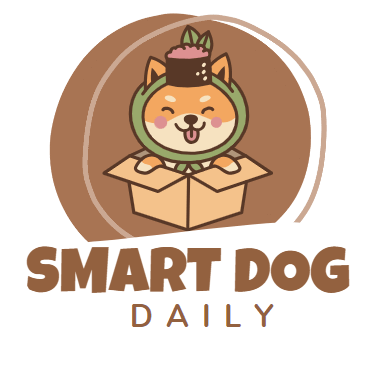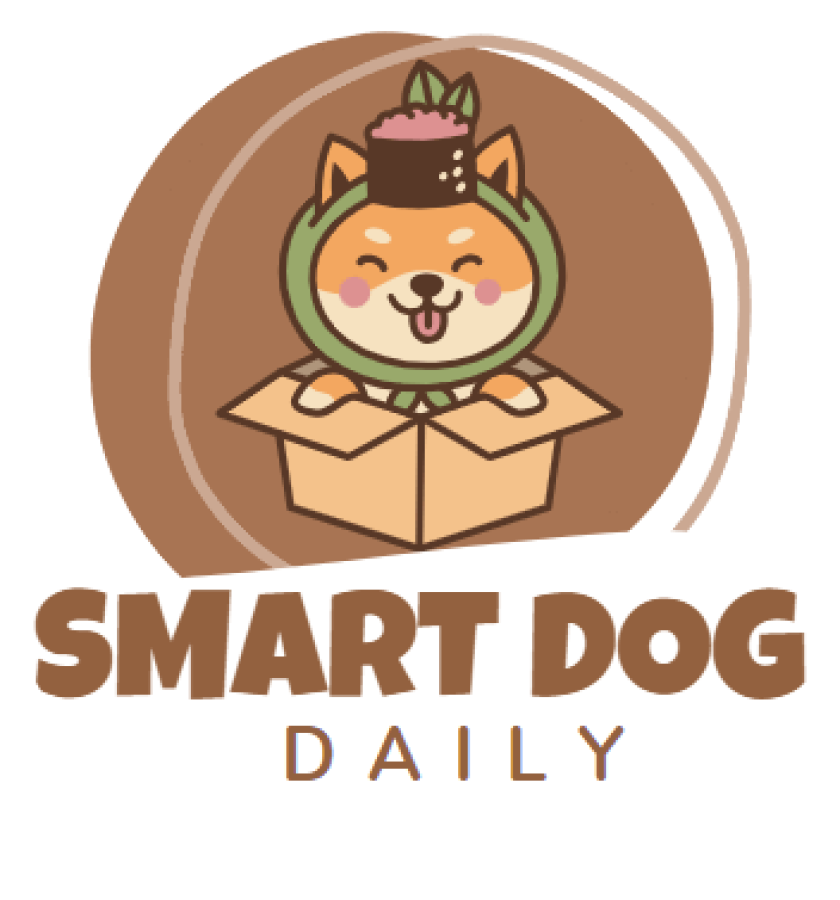Table of Contents
If you’re looking to take your love for dogs to the next level, then mastering the art of dog grooming is the perfect way to enhance your bond with your furry friends in Singapore. With a dog grooming course in Singapore, you’ll learn essential skills and techniques to keep your pet looking and feeling their best. From basic grooming methods to advanced styling, this article will guide you through the rewarding journey of becoming an expert dog groomer. Say goodbye to expensive trips to the groomers and say hello to the satisfaction of pampering your beloved companion yourself.
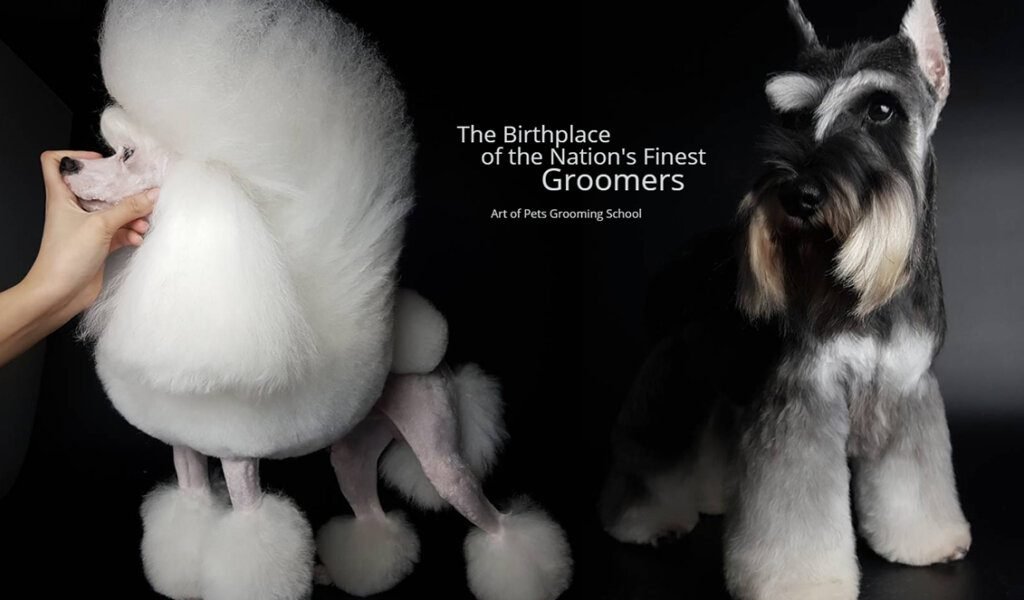
Different Types of Dog Grooming Services
Bathing and Drying
One of the most basic and essential grooming services for dogs is bathing and drying. Dogs need regular baths to keep their coat clean and healthy. During the bathing process, a suitable shampoo and conditioner should be selected to match your dog’s specific needs. It’s crucial to use lukewarm water and gentle techniques to avoid causing any discomfort or stress to your furry friend. After the bath, your dog should be thoroughly dried using appropriate drying methods and tools to prevent any skin issues that may arise from excess moisture.
Hair Trimming and Styling
Hair trimming and styling are popular grooming services that play a significant role in enhancing your dog’s appearance. Different coat types require specific grooming techniques and tools to achieve the desired results. Clippers, trimmers, and scissors are commonly used to shape and trim your dog’s hair. It’s important to choose the appropriate clipper blades and guards to ensure a safe and effective trimming process. By mastering the art of hair trimming and styling, you can create a stylish and symmetrical groom that suits your dog’s breed and personal style.
Nail Clipping and Paw Care
Keeping your dog’s nails in good condition is crucial for their overall well-being. Regular nail clipping prevents nails from becoming overgrown and curbing the risk of painful issues such as nail splitting or breaking. Proper technique and the right nail clippers are essential to ensure a safe and comfortable experience for your dog. Additionally, paw care involves moisturizing the paw pads to keep them healthy and protect them from drying out or cracking. By maintaining good nail and paw care, you contribute to your dog’s comfort and help prevent any potential paw-related problems.
Ear Cleaning
Ear cleaning is an often overlooked but essential part of dog grooming. Regularly cleaning your dog’s ears helps prevent ear infections and keeps them comfortable. An appropriate ear cleaner solution should be selected to ensure the safety and effectiveness of the cleaning process. Inspecting the ears for any signs of infection or irritation is an important step before proceeding with cleaning. Gently removing excess wax and debris using cotton balls or gauze ensures thorough cleaning without causing any discomfort to your dog. By regularly attending to your dog’s ear cleaning needs, you can minimize the risk of ear-related health issues.
Teeth Cleaning
Maintaining your dog’s oral hygiene is vital for their overall health and well-being. Regular teeth cleaning helps prevent dental problems such as gum disease, tooth decay, and bad breath. Choosing the right toothbrush and toothpaste formulated specifically for dogs is essential to ensure effective cleaning without causing any harm. Introducing toothbrushing to your dog gradually and using proper brushing techniques will help make the experience more comfortable for both of you. Additionally, supplementary dental care products such as dental chews or water additives can further support your dog’s oral hygiene.
Choosing a Reputable Dog Grooming Salon
Recommendations and Referrals
When looking for a reputable dog grooming salon, seeking recommendations and referrals from friends, family, or fellow dog owners can be a great starting point. They can provide valuable insights based on their personal experiences with different salons. Ask about the quality of grooming services, the staff’s professionalism, and their overall satisfaction with the salon. Choosing a salon recommended by someone you trust can give you peace of mind and increase the likelihood of a positive grooming experience for your furry friend.
Online Reviews and Ratings
Another useful tool in choosing a reputable dog grooming salon is checking online reviews and ratings. Websites and platforms such as Google, Yelp, or Facebook usually feature customer reviews and ratings for various businesses, including grooming salons. Reading through these reviews can give you an idea of other customers’ experiences and help you gauge the quality of service provided by the salon. Look for salons with consistently positive reviews and higher ratings, as this indicates a higher level of customer satisfaction.
Visit the Salon and Observe
To get a firsthand impression of a grooming salon, it’s recommended to visit the salon in person and observe the facility. Take note of the salon’s cleanliness, organization, and overall atmosphere. Are the grooming stations well-maintained and equipped with the necessary tools? Are the dogs being handled gently and with care? Observe how the groomers interact with the dogs and assess their professionalism and expertise. Visiting the salon allows you to assess whether it meets your expectations and standards for a reputable and reliable grooming service provider.
Check for Proper Licensing and Certifications
When choosing a dog grooming salon, it’s important to ensure that it operates legally and follows proper industry standards. Check if the salon holds the necessary licenses and certifications required by local authorities. This demonstrates the salon’s commitment to providing safe grooming practices and complying with regulations. Groomers who have completed recognized grooming courses or certifications can also give you confidence in their knowledge and skills. Don’t hesitate to inquire about the qualifications and training of the salon’s staff.
Ask about Health and Safety Practices
The health and safety of your dog should be a top priority when selecting a grooming salon. Before making your decision, ask the salon about their health and safety practices. Are they strict about vaccination requirements for the dogs they groom? How do they handle emergencies or accidents during grooming? Do they have policies in place to minimize the risk of cross-contamination between dogs? By asking these questions, you can ensure that the grooming salon takes the necessary precautions to maintain a safe and healthy environment for your beloved pet.
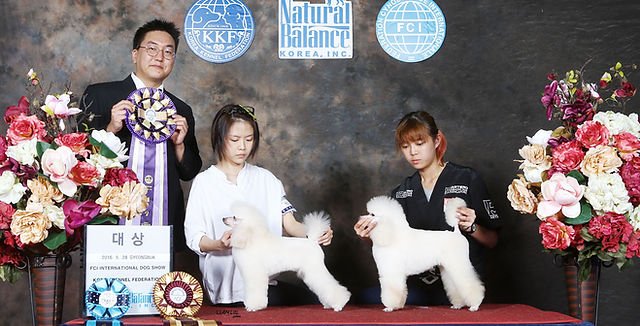
Understanding Coat Types and Grooming Needs
Double-Coated Breeds
Double-coated breeds, such as Siberian Huskies and Golden Retrievers, have two layers of fur – a dense undercoat and a longer, protective outer coat. Grooming these breeds requires special attention to maintain the health and appearance of their coat. Regular brushing is essential to remove loose fur and prevent matting. During shedding seasons, a de-shedding tool can help remove excess hair from the undercoat. Double-coated breeds usually do not require frequent hair trimming, except for specific areas such as the paws or sanitary areas.
Short-Haired Breeds
Short-haired breeds, like Beagles and Boxers, have a sleek and low-maintenance coat. Although they may not require extensive hair trimming or styling, regular brushing is still necessary to remove dead hair and distribute natural oils. This promotes healthy skin and a shiny coat. Short-haired breeds also benefit from occasional bathing to keep their coat clean and odor-free. Since their fur is shorter, they may also require less frequent nail clipping and ear cleaning compared to dogs with longer fur.
Curly or Wavy-Coated Breeds
Curly or wavy-coated breeds, such as Poodles and Bichon Frises, have unique grooming needs due to their dense and curly fur. Regular brushing is crucial to prevent matting and tangling. These breeds often require professional hair trimming to maintain a well-groomed appearance. The frequency of haircuts will depend on the desired style and the rate of hair growth. It’s important to use suitable grooming tools and techniques to ensure the coat’s texture remains intact while achieving the desired look.
Long-Haired Breeds
Long-haired breeds, like Afghan Hounds and Yorkshire Terriers, have luxurious and flowing coats that require regular care and maintenance. Daily brushing is necessary to prevent tangles, matting, and debris buildup. Depending on the breed, regular hair trimming may also be required to maintain a manageable coat length and prevent excessive shedding. Special attention should be paid to areas prone to matting, such as the ears and the belly. Long-haired breeds may also need more frequent bathing to keep their coat clean and free from tangles.
Combination Coat Types
Some breeds have combination coat types that require a combination of grooming techniques. For example, the Cockapoo, a crossbreed between a Cocker Spaniel and a Poodle, can have a mix of wavy, curly, or straight hair. Grooming these breeds involves brushing, trimming, and styling techniques suitable for each section of their coat. Combination coat types often require more frequent brushing to prevent tangling and matting, as the different textures and lengths of hair can easily interlock.
Essential Dog Grooming Tools and Supplies
Brushes and Combs
Having the right brushes and combs is essential for maintaining your dog’s coat and overall grooming. Different brushes cater to specific coat types and purposes. Slicker brushes are excellent for removing tangles and mats, while bristle brushes are ideal for distributing natural oils and promoting shine. For long-haired breeds, a dematting comb can help remove tangles and prevent matting. Additionally, having a flea comb is beneficial for detecting and removing fleas or flea dirt from your dog’s coat.
Clippers and Trimmers
Clippers and trimmers are necessary tools for hair trimming and styling. Electric clippers with different blade sizes allow precise and consistent cutting. When selecting clippers, consider your dog’s breed and the desired hair length. Trimmers are useful for detailing and shaping specific areas, such as the face or paw pads. Cordless and rechargeable options provide flexibility and convenience during the grooming process.
Scissors
Scissors are essential for precise grooming and shaping. Straight scissors are versatile and suitable for various grooming tasks, such as trimming hair on the ears or tail. Curved scissors allow for smoother, rounded cuts, making them ideal for blending fur lengths and creating softer transitions. Thinning shears are useful for thinning out dense areas and reducing bulkiness.
Nail Clippers
Proper nail care is important for your dog’s comfort and health. Guillotine-style or scissor-style nail clippers are commonly used for dogs. Choose a nail clipper that is the right size for your dog and has sharp blades to ensure a clean cut. Some clippers also come with built-in safety features, such as a quick-stop guard to prevent accidentally cutting too deep into the nail.
Ear Cleaner Solution
An appropriate ear cleaner solution is essential for maintaining your dog’s ear health. Look for a gentle and veterinary-approved solution designed specifically for dogs. Avoid using cotton swabs, as they can push debris further into the ear canal and potentially cause damage. Instead, use soft cotton balls or gauze to gently clean the visible parts of the ear.
Toothbrush and Toothpaste
Maintaining your dog’s oral hygiene requires the right toothbrush and toothpaste. Use a toothbrush specifically designed for dogs, as it will have bristles and a shape suitable for their mouth. Dog toothpaste is formulated to be safe for dogs to ingest and comes in flavors that appeal to them. Avoid using human toothpaste, as it can be toxic to dogs.
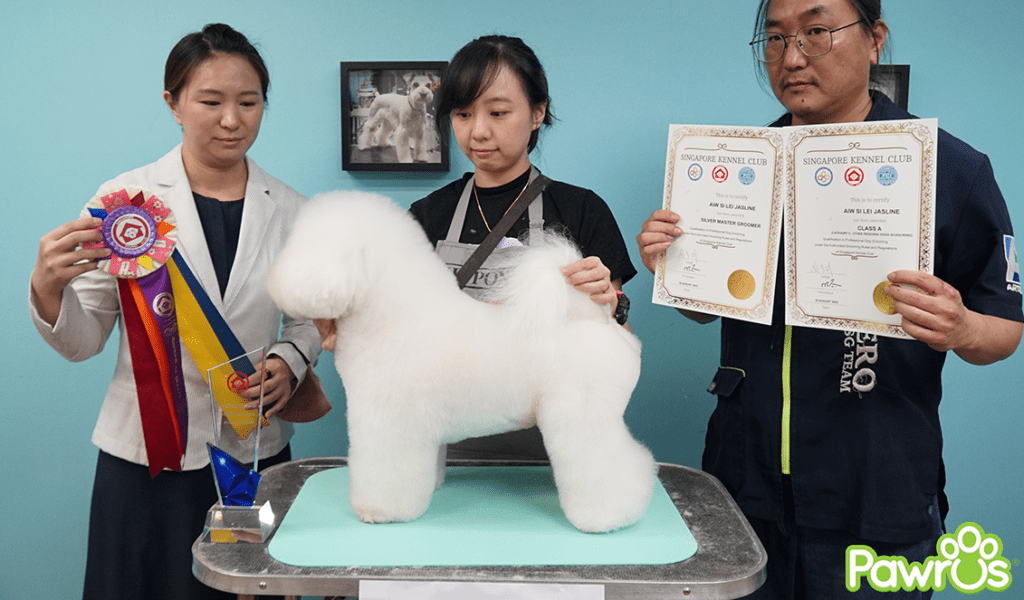
Proper Bathing and Drying Techniques
Choosing the Right Shampoo and Conditioner
Selecting the right shampoo and conditioner is crucial for a successful bath. Choose a shampoo formulated specifically for dogs to avoid irritating their skin or causing dryness. There are shampoos available for different coat types, such as moisturizing shampoos for dry skin or hypoallergenic shampoos for dogs with sensitive skin. Conditioning after shampooing helps keep your dog’s coat soft and manageable. Use a conditioner suitable for your dog’s coat type and follow the instructions for proper application and rinsing.
Brushing and Detangling Before Bathing
Before bathing your dog, it’s important to brush and detangle their coat to remove any loose hair or mats. Brushing not only helps prevent further tangles but also distributes natural oils and stimulates the skin. Use a suitable brush or comb for your dog’s coat type and work through any knots or tangles gently to avoid causing discomfort or pain.
Handling Water Temperature and Pressure
When bathing your dog, it’s essential to use lukewarm water to ensure their comfort. Test the water temperature with your wrist or a thermometer to ensure it is not too hot or too cold. It’s best to use a handheld sprayer or a container to control the water pressure and minimize any stress your dog may feel from the water flow. Gradually wet your dog’s coat, starting from the neck and moving down to the tail, avoiding the head area.
Thoroughly Rinse Off Soap Residue
After shampooing, thorough rinsing is crucial to remove all soap residue from your dog’s coat. Soap residue left on the skin can cause irritation or trigger allergies. Rinse your dog’s coat thoroughly, making sure to reach all areas, including the underbelly and legs. Take your time to ensure all shampoo and conditioner are rinsed out completely.
Drying Methods and Tools
Proper drying is important to prevent moisture-related skin issues and discomfort for your dog. Towel-drying is the first step after rinsing, gently patting your dog’s coat to absorb excess water. It’s important not to vigorously rub the coat, as this can cause tangles or damage the hair. After towel-drying, you can use a blow dryer on a low heat setting, keeping it at a safe distance from your dog’s skin. Alternatively, using a dog-specific drying tool, such as a high-velocity dryer, can speed up the drying process and help prevent matting.
Trimming and Styling Your Dog’s Hair
Choosing the Appropriate Clipper Blades and Guards
When trimming your dog’s hair, it’s crucial to select the appropriate clipper blades and guards to achieve the desired length. Different clipper blade numbers correspond to different hair lengths. For shorter trims, use a lower blade number, while higher blade numbers are suitable for longer cuts. Guards can be attached to the clipper blades to achieve a uniform length across the coat.
Techniques for Safely Trimming Your Dog’s Hair
Safety is paramount when trimming your dog’s hair. Start by ensuring your dog is relaxed and comfortable before proceeding with the trimming. Using gentle and steady pressure, move the clippers in the direction of hair growth to achieve an even cut. Take your time and work slowly, especially around sensitive areas such as the face, paws, or tail. Regular breaks and rewards can help keep your dog calm and cooperative throughout the grooming process.
Creating a Stylish and Symmetrical Groom
If you want to go beyond a simple trim and create a stylish groom for your dog, a better understanding of the breed-specific styles is necessary. Research the specific grooming requirements for your dog’s breed and consult grooming guides or videos tailored to that breed. Pay attention to details such as the correct shaping of the head, tail, and feet to achieve a symmetrical and breed-appropriate look. Take your time and use proper techniques to create a polished and professional groom.
Blending and Graduating Fur Lengths
Blending and graduating fur lengths is a technique used to create a smooth transition between different lengths of hair. This technique is often used in styling curly or wavy coats, as well as with combination coat types. By carefully blending and gradually trimming the hair with scissors or thinning shears, you can achieve a natural-looking groom that avoids abrupt hair length changes. Taking your time and using precise scissoring techniques can make a significant difference in the final result.
Finishing Touches
After trimming and styling your dog’s hair, it’s important to pay attention to the finishing touches. Using scissors, carefully trim any stray hairs or uneven patches to create a clean and polished appearance. Take a step back and assess the overall look to ensure the groom is symmetrical and balanced. Finally, reward your dog for their patience and cooperation throughout the grooming process.
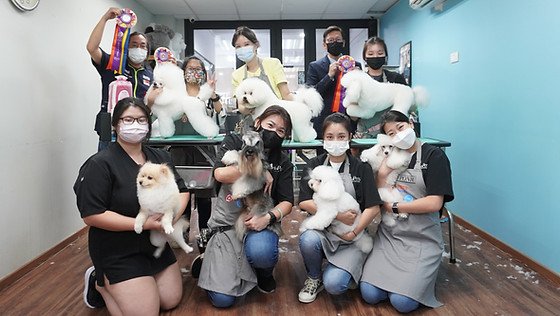
Nail Clipping and Paw Care
Choosing the Right Nail Clippers
Selecting the right nail clippers for your dog is essential to ensure a safe and comfortable experience. Guillotine-style nail clippers and scissor-style nail clippers are common options. Guillotine-style clippers provide a clean cut, while scissor-style clippers allow for greater control. Choose a nail clipper that is the appropriate size for your dog’s nails and opt for clippers with sharp blades to prevent any discomfort or injury.
Understanding the Anatomy of a Dog’s Nail
Before starting the nail clipping process, it’s important to understand the anatomy of a dog’s nail. A dog’s nail has a hard outer shell called the nail sheath or shell, which encases a softer inner core called the quick. The quick contains blood vessels and nerves, so it’s essential to avoid cutting into it to prevent pain and bleeding. In dogs with light-colored nails, the quick is often visible as a pink area. For dogs with dark-colored nails, extra caution is needed, as the quick may not be easily visible.
Proper Technique for Nail Clipping
When clipping your dog’s nails, it’s crucial to use proper technique to avoid causing any discomfort or harm. Start by gently holding your dog’s paw, ensuring they are calm and relaxed. Position the clippers just before the area where the quick begins, taking care to leave a safe margin. Gradually squeeze the clippers to make a clean cut. If you accidentally cut into the quick and your dog starts bleeding, apply gentle pressure with a styptic powder or a clean cloth to stop the bleeding.
Nail Grinders as an Alternative
Nail grinders are an alternative to traditional nail clippers and offer a different approach to nail care. Nail grinders use a rotating abrasive tip to gradually file down the nail, eliminating the risk of cutting into the quick. While some dogs may find the noise or vibration of nail grinders unsettling at first, they can be a helpful tool for dogs with thicker nails or for owners who prefer a more controlled and gradual nail trimming process. When using a nail grinder, it’s important to maintain a calm and patient approach.
Moisturizing Paw Pads
Moisturizing your dog’s paw pads helps keep them healthy and protected. Over time, paw pads can become dry or cracked, especially in extreme weather conditions. Use a paw moisturizing balm or a dog-friendly lotion to keep the paw pads soft and supple. Regularly massaging the balm into the pads will also promote better blood circulation and increase your dog’s comfort during walks or outdoor activities.
Proper Ear Cleaning Techniques
Selecting an Appropriate Ear Cleaner Solution
An appropriate ear cleaner solution is essential for maintaining your dog’s ear health. Look for a gentle and veterinary-approved solution designed specifically for dogs. Avoid using alcohol-based or harsh solutions, as they can irritate the ear canal. Speak to your veterinarian for recommendations if your dog has any specific ear issues or sensitivities.
Inspecting for Signs of Infection or Irritation
Before proceeding with ear cleaning, it’s important to inspect your dog’s ears for any signs of infection or irritation. Look for redness, swelling, discharge, or a foul odor, as these can indicate underlying ear problems. If you notice any abnormalities, it’s recommended to consult your veterinarian before attempting any cleaning at home.
Gently Removing Excess Wax and Debris
To clean your dog’s ears, use a soft cotton ball or gauze pad and soak it in the ear cleaner solution. Gently wipe the visible parts of the ear, avoiding inserting anything deep into the ear canal. Be patient and work carefully, particularly if your dog is sensitive or the ears are inflamed. Avoid using cotton swabs, as they can push debris further into the ear canal and potentially cause damage.
Using Cotton Balls or Gauze
Using cotton balls or gauze is the safest and most efficient method for ear cleaning. These materials are soft and less likely to cause any harm or discomfort to your dog’s ears. Remember to use a new cotton ball or piece of gauze for each ear to prevent any potential cross-contamination.
Preventing Ear Infections
By regularly cleaning your dog’s ears and taking preventative measures, you can help reduce the risk of ear infections. Avoid allowing water to enter your dog’s ears during baths or swimming, as excessive moisture can contribute to ear infections. Additionally, take note of any underlying allergies, as they can increase the likelihood of ear problems. If you suspect an ear infection, consult your veterinarian for an accurate diagnosis and appropriate treatment.
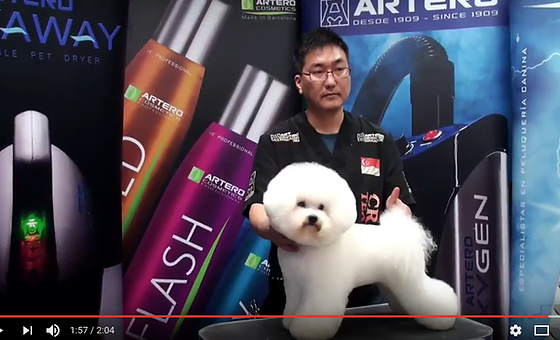
Maintaining Your Dog’s Oral Hygiene
Choosing the Right Toothbrush and Toothpaste
Proper oral hygiene is important for your dog’s overall health. Using the right toothbrush and toothpaste is crucial for effective tooth cleaning. Choose a toothbrush specifically designed for dogs, as it will have bristles and a shape suitable for their mouth. Dog toothpaste is formulated to be safe for dogs to ingest and comes in flavors that appeal to them. Avoid using human toothpaste, as it can be toxic to dogs.
Introducing Toothbrushing to Your Dog
Introducing toothbrushing to your dog should be done gradually and with positive reinforcement. Start by getting your dog comfortable with having their mouth and teeth touched. You can use a finger brush or a soft cloth to gently rub their teeth and gums. Once your dog is accustomed to this, gradually introduce the toothbrush and toothpaste. Choose a quiet and calm environment for toothbrushing sessions, and remember to reward your dog for their cooperation and patience.
Brushing Techniques
When brushing your dog’s teeth, use gentle strokes and make sure to reach all areas of the mouth, including the back teeth and along the gumline. Pay extra attention to the outer surfaces of the upper molars, as this is where plaque and tartar tend to accumulate. Brushing should be done in a slow and controlled manner to avoid causing any discomfort or injury to your dog’s gums.
Frequency of Brushing
The frequency of tooth brushing will depend on your dog’s individual needs and susceptibility to dental issues. Ideally, brushing your dog’s teeth should be done daily or at least several times a week. Regular brushing helps prevent plaque and tartar buildup, reduces the risk of gum disease and tooth decay, and maintains fresh breath. If your dog is resistant to daily brushing, consult your veterinarian for alternative dental care recommendations.
Supplementary Dental Care Products
In addition to regular tooth brushing, supplementary dental care products can contribute to maintaining your dog’s oral hygiene. Dental chews or toys are designed to promote chewing and help remove plaque and tartar. Dental water additives, when added to your dog’s drinking water, can help reduce the growth of bacteria and freshen their breath. Consult your veterinarian for recommendations on dental care products suitable for your dog’s specific needs.
Handling Common Grooming Challenges
Dealing with Mats and Tangles
Mats and tangles can be a common grooming challenge, especially for dogs with long or curly hair. Prevention is key, so regular brushing to remove loose hair and prevent matting is crucial. If your dog already has mats, gently work on them using your fingers or a dematting comb, starting from the outer edges and gradually working your way in. For stubborn mats, consider using a detangling spray or seek professional help to avoid causing any discomfort or skin damage.
Managing Shedding
Shedding is a natural process for dogs, but it can sometimes be overwhelming. Regular brushing helps remove loose hair and reduces shedding. Opt for deshedding tools or brushes specifically designed to remove excess fur from the undercoat of double-coated breeds. A balanced diet and supplements rich in omega-3 fatty acids can also help promote healthy skin and coat, potentially reducing excessive shedding.
Addressing Skin Issues
Skin issues can arise due to various factors, such as allergies, parasites, or medical conditions. If you notice any signs of skin irritation, redness, or excessive itching, consult your veterinarian for a thorough examination and appropriate treatment. Regular grooming, including proper bathing, drying, and brushing techniques, can help maintain healthy skin. If your dog has a known skin condition, discuss specific grooming requirements and products with your veterinarian.
Controlling Odor
Regular grooming plays a significant role in controlling odor and keeping your dog smelling fresh. Bathing with a gentle, dog-specific shampoo removes dirt, debris, and any unpleasant odors from your dog’s coat. Regular brushing helps distribute natural oils and prevent dirt buildup, further reducing odor. Additionally, keeping your dog’s ears clean and dry can prevent ear infections, which can contribute to an unpleasant smell.
Calming and Soothing Anxious Dogs
Some dogs may experience anxiety or become stressed during grooming sessions. Creating a calming environment, using positive reinforcement, and gradually introducing grooming activities can help alleviate anxiety. Take breaks if needed and reward your dog for their cooperation and good behavior. If your dog’s anxiety persists, consider seeking professional help from a certified dog trainer or behaviorist who can provide guidance on how to address their specific needs.
Overall, mastering the art of dog grooming requires patience, practice, and a genuine love for your furry friend. By understanding the different grooming services, choosing a reputable salon, considering coat types and grooming needs, having the right tools and supplies, and using proper techniques, you can ensure a positive and rewarding grooming experience for both you and your dog. Regular grooming helps maintain your dog’s health, hygiene, and overall well-being, ensuring they look and feel their best.
